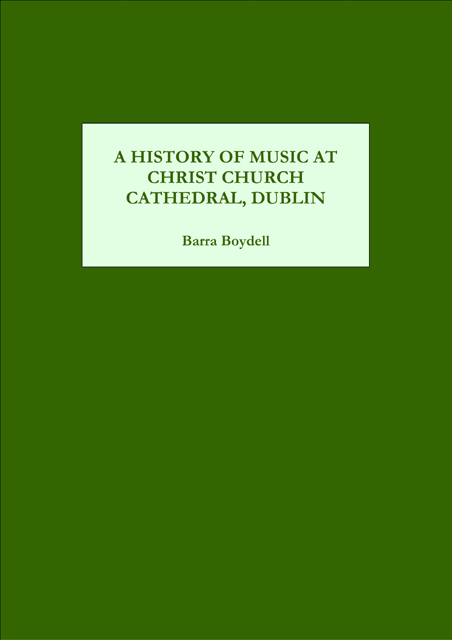Book contents
- Frontmatter
- Contents
- Plates and Musical Examples
- Foreword
- Preface
- Editorial Conventions
- Introduction
- One ‘Dulces Fecit Modos’: The Medieval Cathedral-Priory
- Two ‘For the More Honour of God’s Divine Service’: The Reformation and Early Seventeenth Century
- Three “So Great and Solemn Service’: The Restoration and Later Seventeenth Century
- Four ‘The Increasing Excellence of the Choir’: The Eighteenth and Early Nineteenth Centuries
- Five ‘A More Efficient Performance of the Duties of the Choir’: The Mid-Nineteenth Century
- Six Decline and Revival: Disestablishment and the Twentieth Century
- Appendix One Succession Lists of Organists and Assistant Organists
- Appendix Two Succession List of Masters of the Boys/Music Masters/Choir Masters
- Abbreviations and Bibliography
- Index
One - ‘Dulces Fecit Modos’: The Medieval Cathedral-Priory
Published online by Cambridge University Press: 21 March 2023
- Frontmatter
- Contents
- Plates and Musical Examples
- Foreword
- Preface
- Editorial Conventions
- Introduction
- One ‘Dulces Fecit Modos’: The Medieval Cathedral-Priory
- Two ‘For the More Honour of God’s Divine Service’: The Reformation and Early Seventeenth Century
- Three “So Great and Solemn Service’: The Restoration and Later Seventeenth Century
- Four ‘The Increasing Excellence of the Choir’: The Eighteenth and Early Nineteenth Centuries
- Five ‘A More Efficient Performance of the Duties of the Choir’: The Mid-Nineteenth Century
- Six Decline and Revival: Disestablishment and the Twentieth Century
- Appendix One Succession Lists of Organists and Assistant Organists
- Appendix Two Succession List of Masters of the Boys/Music Masters/Choir Masters
- Abbreviations and Bibliography
- Index
Summary
Liturgy and chant
As the Introduction emphasised, it is to the south of England that one must look in order to understand the musical and liturgical practices at Christ Church during the first century or so of its existence. The Benedictine cathedral-priory of Worcester, where Bishop Pátraic of Dublin was trained between 1074 and 1084, was already noted by the ninth century for its classical tradition of Roman chant, and surviving sources of the early eleventh century from Winchester and Canterbury demonstrate that English chant was closely linked to French and Rhenish forms of the Roman liturgy. The early eleventh-century Winchester troper, the earliest surviving practical source of liturgical polyphony in western Europe, provides clear evidence not only of the importance of music in the Anglo-Saxon liturgy but also of how advanced polyphony was in pre-Conquest England. One can reasonably assume that a comparable liturgy and chant repertoire, and possibly even polyphony similar to that of the Winchester troper, was sung at Christ Church during this period. Around 1075–80 Archbishop Lanfranc replaced earlier English practices at Canterbury by reforms based on those of Cluny and, particularly in the light of Bishop Donngus (Donatus) of Dublin’s having been consecrated by Lanfranc in 1089, one must again suppose that these reforms were reflected at Christ Church.
During the eleventh and twelfth centuries the liturgy as used at Salisbury cathedral became the most widely practised in England. Known as the Sarum use, it was officially established in Ireland at a synod at Cashel called by Henry II in 1172. The fact that a synod held fourteen years later in 1186 at Christ Church itself found it necessary to declare its adoption within the diocese of Dublin is a reminder that actual implementation could lag significantly behind the issuing of synodal decrees. While the liturgy celebrated in most monasteries followed monastic use rather than secular (such as that of Sarum), Augustinian houses being under the authority of their local bishop most often followed the secular use of their diocese. That this was indeed the case at Christ Church under the Augustinian canons of the Arrouasian order introduced by Lorcán Ua Tuathail in 1162 is confirmed by the late fourteenth-century Christ Church psalter discussed below.
- Type
- Chapter
- Information
- A History of Music at Christ Church Cathedral, Dublin , pp. 11 - 31Publisher: Boydell & BrewerPrint publication year: 2004

